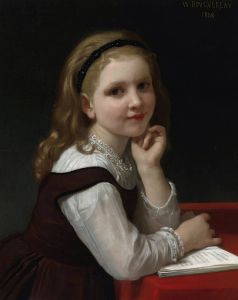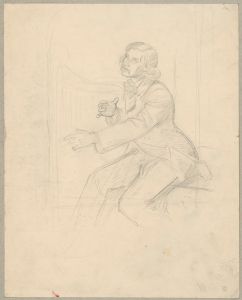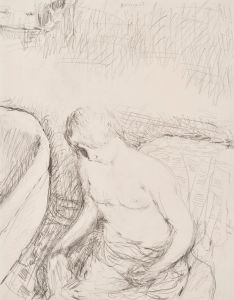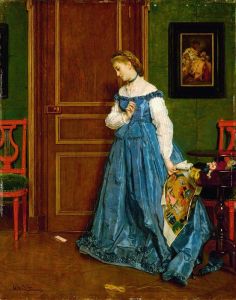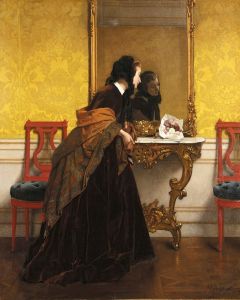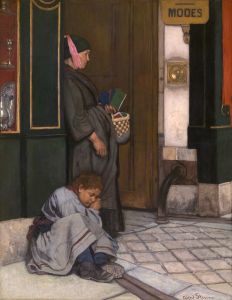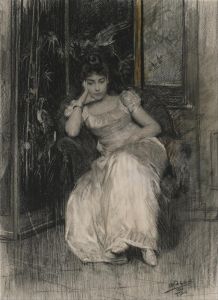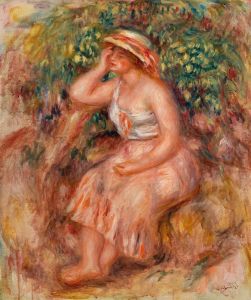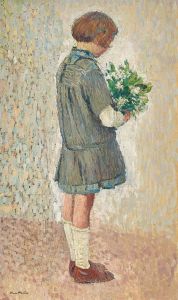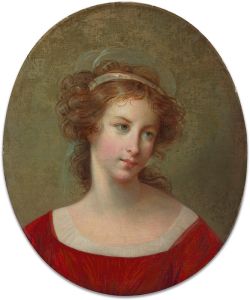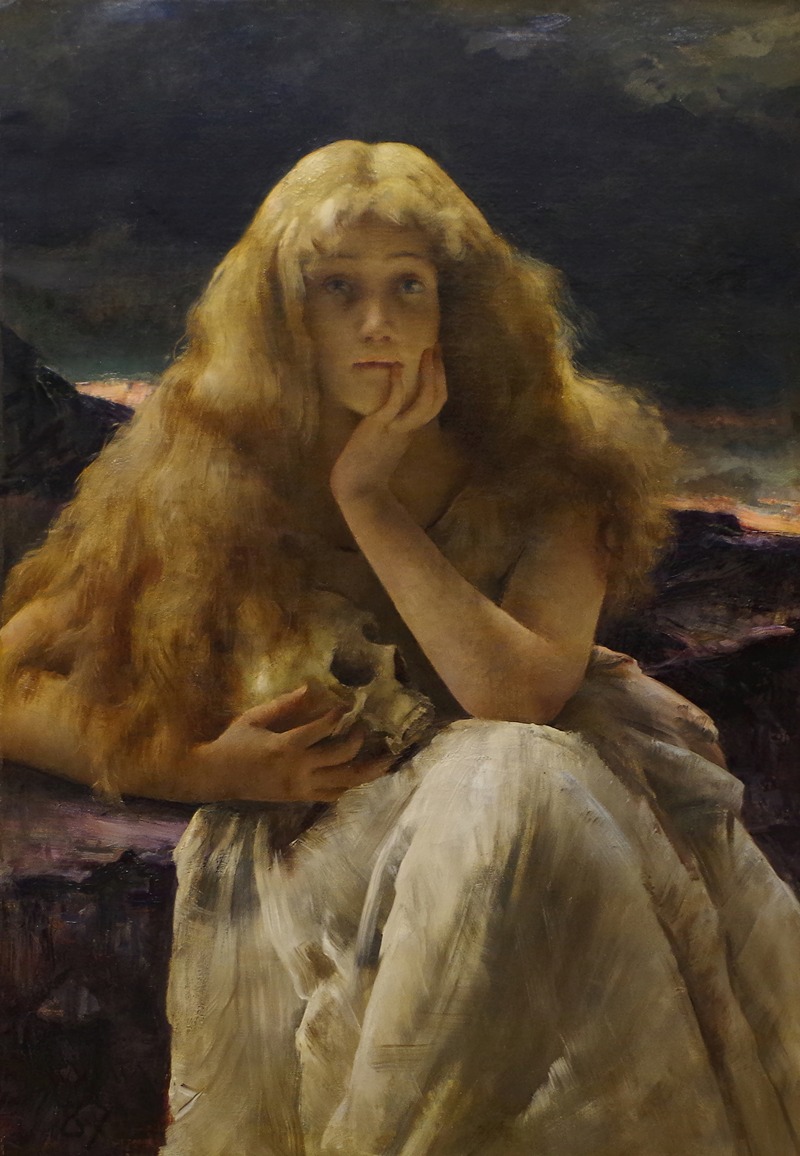
Maria Magdalena
A hand-painted replica of Alfred Stevens’s masterpiece Maria Magdalena, meticulously crafted by professional artists to capture the true essence of the original. Each piece is created with museum-quality canvas and rare mineral pigments, carefully painted by experienced artists with delicate brushstrokes and rich, layered colors to perfectly recreate the texture of the original artwork. Unlike machine-printed reproductions, this hand-painted version brings the painting to life, infused with the artist’s emotions and skill in every stroke. Whether for personal collection or home decoration, it instantly elevates the artistic atmosphere of any space.
Alfred Stevens, a Belgian painter known for his exquisite portrayal of women, created the painting "Maria Magdalena." This artwork is a testament to Stevens' skill in capturing the intricate interplay of light, texture, and emotion, which was characteristic of his oeuvre during the 19th century. Stevens was born in Brussels in 1823 and became one of the most celebrated artists of his time, particularly noted for his ability to blend realism with a sense of elegance and refinement.
"Maria Magdalena" is a part of Stevens' exploration of religious and historical themes, although he is more widely recognized for his depictions of contemporary women in fashionable settings. This painting diverges from his typical subject matter, showcasing his versatility and depth as an artist. The painting reflects the 19th-century fascination with religious figures, particularly Mary Magdalene, who has been a subject of intrigue and reverence in Christian art and literature.
Stevens' interpretation of Mary Magdalene is imbued with a sense of introspection and solemnity. The painting likely depicts her in a moment of contemplation, a common theme in representations of Mary Magdalene, who is often portrayed as a penitent figure. Stevens' use of color and light in "Maria Magdalena" highlights his mastery in creating mood and atmosphere, drawing the viewer into the emotional world of the subject.
The composition of the painting is carefully balanced, with attention to detail that is evident in the textures of the fabrics and the subtle expressions of the figure. Stevens' background in academic art training is apparent in the precision and clarity of his brushwork. His ability to convey the psychological depth of his subjects is one of the reasons his work has endured in popularity.
While "Maria Magdalena" may not be as widely recognized as some of Stevens' other works, it remains an important piece within his body of work. It exemplifies his ability to transcend the boundaries of genre, moving beyond the fashionable scenes of Parisian life for which he is best known. This painting is a reflection of the broader artistic trends of the 19th century, where religious and historical subjects were often revisited with a new sense of realism and emotional depth.
Alfred Stevens continued to paint until his death in 1906, leaving behind a legacy that influenced both his contemporaries and future generations of artists. His works are housed in various museums and collections around the world, where they continue to be studied and admired for their technical excellence and emotional resonance. "Maria Magdalena" stands as a testament to Stevens' artistic range and his ability to capture the human experience in its many forms.





